| ID |
Date |
Author |
Subject |
|
3
|
Mon Jun 10 06:17:51 2019 |
CB, RG, AK | 3-6 June - first DAQ tests |
Tested performance of DAQ with following equipment
Hamamatsu photodiode (S3590-09)
- Powered by Farnell power supply (E30/1). Bias 14V / leakage current < 10uA.
Cooknell preamplifier
- Powered by Farnell power supply (L30BT) @ 24V.
Self-triggering of the CAEN modules is not yet working. Currently triggering using analogue electronic chain.
Preamp signal is split. One half is sent to Ortec 747 TFA ( coarse gain = 1x / fine gain = 2 / int = 50ns / diff =
500ns / non-inv input) -> Octal CFD CF8000 ( threshold ?? ) -> LeCroy 688AL level adapter (for NIM to TTL
conversion) -> CAEN v1730 external trigger IN
Other half is delayed by 250ns line and sent to CAEN V1730 channel 0
Data saved in DiodeTes/
R1 -> Forgot bias to the diode
R2 -> Bias on. Overnight run
R3 -> Bias on. Short run to commission analysis program |
|
29
|
Thu Jun 15 10:13:56 2023 |
Lucia B | 23Na target location |
Used and new 23Na targets are in a box in LAB7, next to the other targets |
|
24
|
Thu Jun 8 10:36:26 2023 |
Lucia B, Carlo B | Start of the measurements |
We have started the pumping system and reached ~10^-6 mbar vacuum. We have then filled the cold trap reaching ~10^-7 mbar.
We have started the chiller and the measurement on the Ta backing on 7/6/23. We made a quick run on top of the 19F(p,gamma) resonance at e_p=340 keV, and an overnight run on top of the 11B(p,gamma) resonance at E_p=163 keV.
On 08/06/23 we focused the beam at E_p=309 keV (23Na(p,gamma) resonance) and left a run on the Ta overlunch.
More details in the attached Excel sheet. |
| Attachment 1: 23NaTarget_tests.xlsx
|
|
25
|
Fri Jun 9 13:47:24 2023 |
Lucia B, Carlo B | LNL1 |
We performed the scan on the LNL1 23Na target (details in the excel sheets in previous entry) for the E_p=309 keV resonance. The target has a sharp well defined rising edge, but it quickly deteriorates under beam bombardement (already after 0.1 C we can see the plateau height at same energy decrease). The thickness of the target also appears much larger than what recorded in the target info.
During the night between 8th and 9th June, we left a long run. In the morning we found the Faraday Cup closed and a pressure of a few mbar in the target chamber. We noticed one of the tubes of the chiller was open on the ground. This caused the chiller to stop working around 9pm. The target started to heat up and the tantalum was bent towards the chamber.
We did not find water in the chamber, it was probably spread on the ground before the chiller stopped working. Possibly a microscopic fracture was formed in the backing, causing air to flow inside the chamber and worsening the vacuum. The turbopump was however still on and does not seem damaged.
Pictures of the target before and after beam bombardment are attached.
|
| Attachment 1: 1686234338228.jpg
|
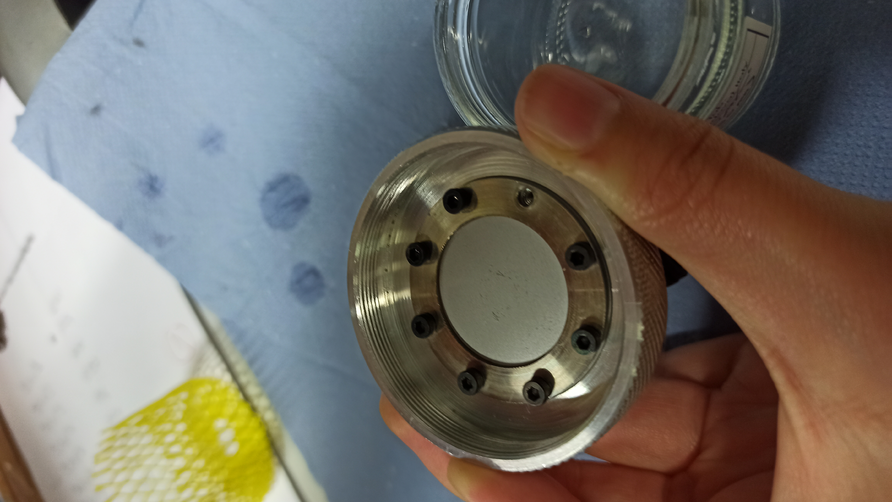
|
| Attachment 2: 1686314774177.jpg
|
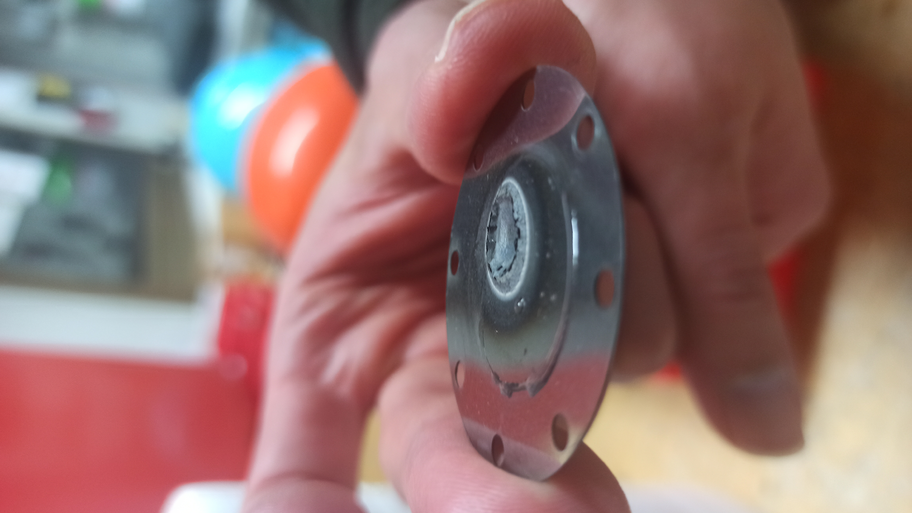
|
| Attachment 3: 1686314774200.jpg
|
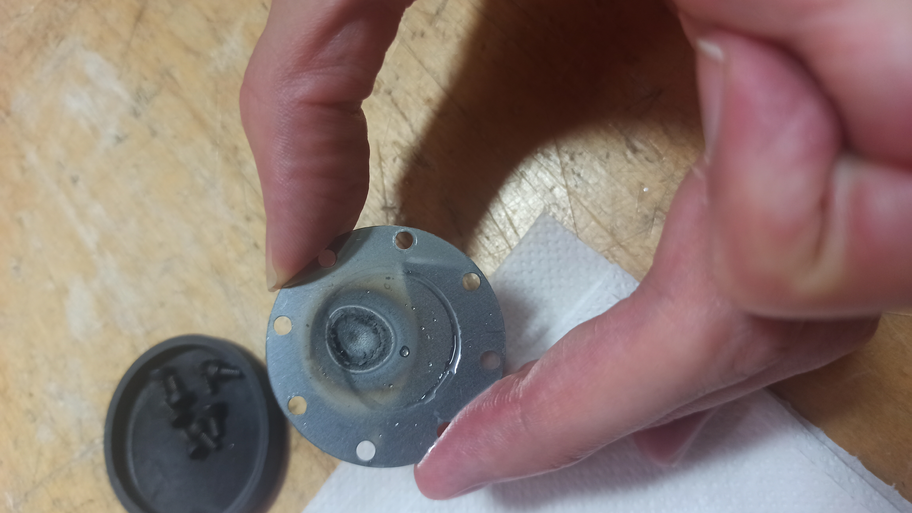
|
| Attachment 4: 1686315494678.jpg
|
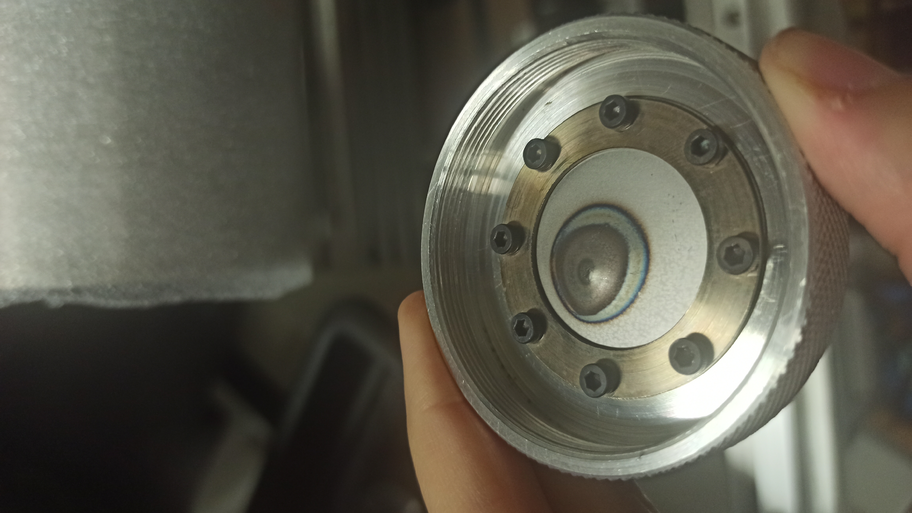
|
|
26
|
Sun Jun 11 09:18:23 2023 |
Lucia B, Carlo B | LNL4 |
When opening LNL4 target jar, the valve did not sound as if air was entering it: we suspect the target was actually not properly under vacuum.
We mounted LNL4 target. However, we could not start the measurement because of bad vacuum. Cold trap was warm. We did several N2 washings to get rid of any residual humidity in the beam line.
We had to dismount the target and do several tests with the leak finder before finding out that the problem was a broken O-ring between target and target holder AND damaged chiller's tube valve on target holder.
As a consequence, the target was exposed to air for quite some time. No visible degradation. Some pictures are attached.
We finally started the scan: details in the excel sheet. Target seems to have withstood air humidity! |
| Attachment 1: lnl4_before1.jpg
|
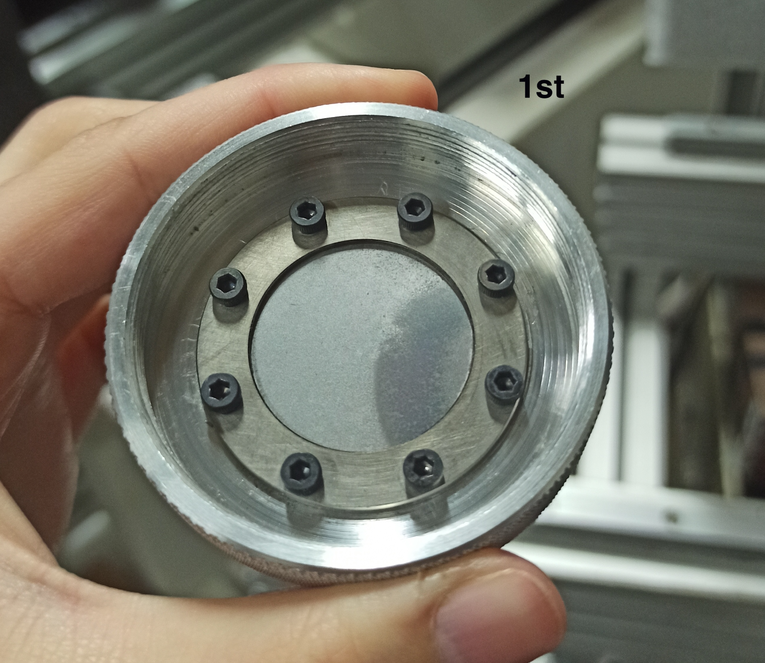
|
| Attachment 2: lnl4_before2.jpg
|
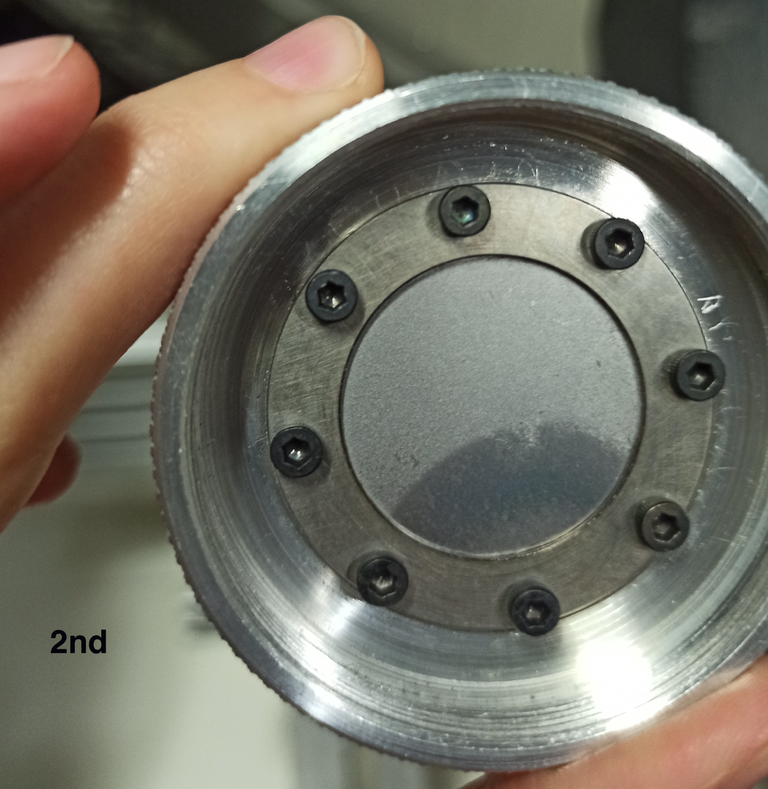
|
| Attachment 3: Lnl4_before3.jpg
|
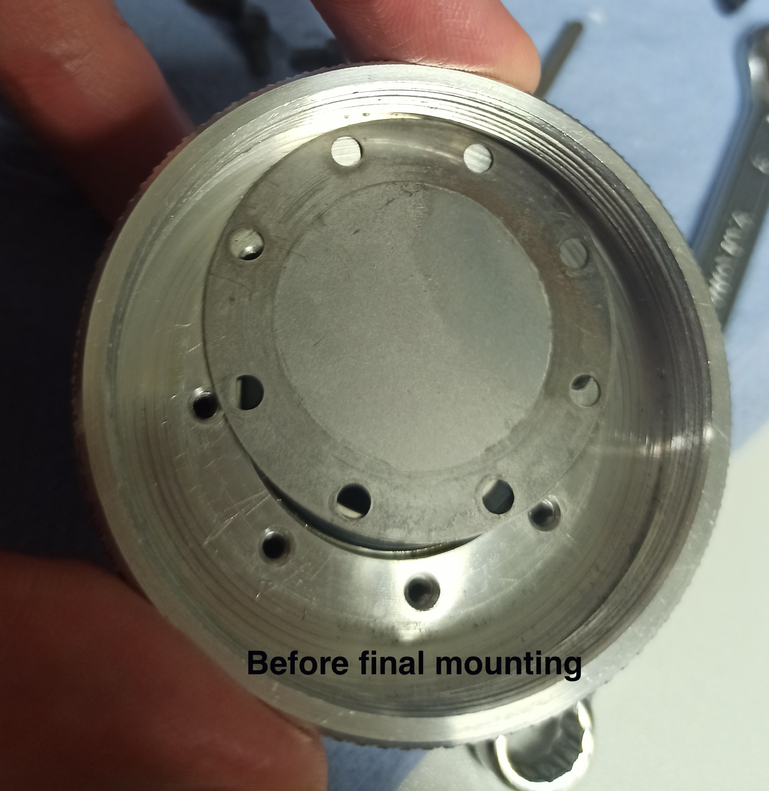
|
|
27
|
Tue Jun 13 12:44:05 2023 |
Lucia B, Carlo B | LNL4 dismounted - LNL6 mounted |
On 12/06/2023 we dismounted LNL4 after approximately 12 C were deposited.
We then mounted LNL6 (sputtered, in-air target). After a scan of 309 keV resonance, we left the target on for an overnight run. In the morning of 13/06/2023, the plateau was at the same level as the day before. We did another scan and left the target for few more hours under beam.
Pictures of targets attached (LNL4 after beam, LNL6 before beam) . |
| Attachment 1: LNL4_after.jpg
|
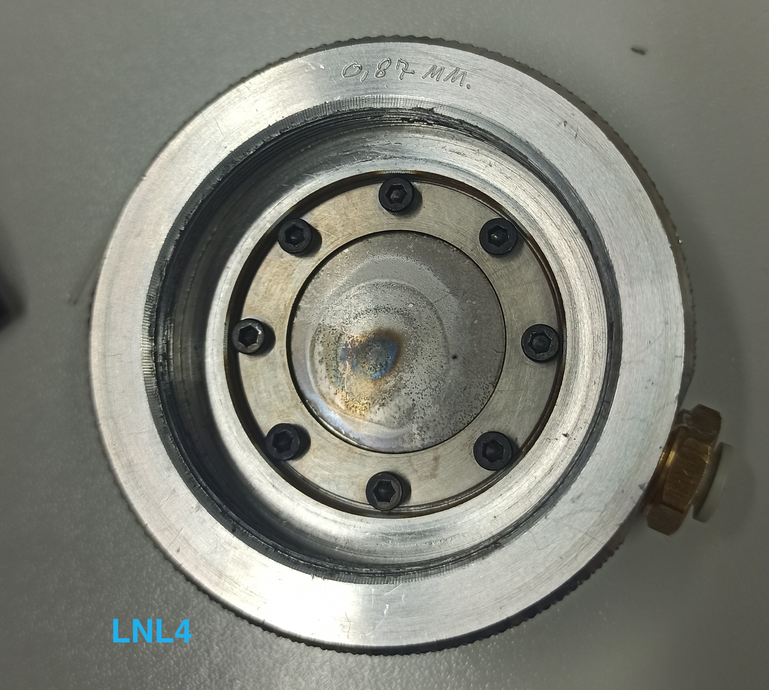
|
| Attachment 2: LNL6_before.jpg
|
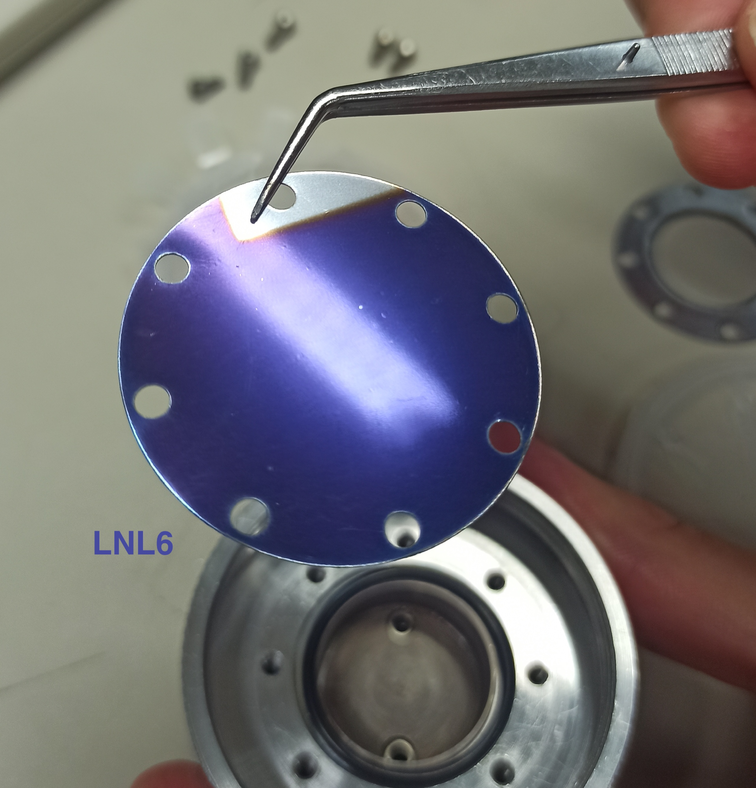
|
|
28
|
Wed Jun 14 11:30:42 2023 |
Lucia B, Carlo B | LNL6-LNL2-LNL9 |
On 13/06/2023 afternoon we dismounted LNL6 sputtered target and mounted LNL2 (identical to LNL1, one Cr layer). We performed a scan of E_res=309 keV and left overnight under beam. In the morning 14/06/2023 we repeated the scan: the plateau has increased by 50% in height, but was much shorter. After dismounting, we notice witish dots around the beam spot.
We then mounted LNL9 (sputtered) and performed a scan. Very short plateau. We left for a long run.
Pictures of the targets attached (LNL6 after- LNL2 before and after - LNL9 before). |
| Attachment 1: LNL6_after_front.jpg
|

|
| Attachment 2: LNL6_after_back.jpg
|
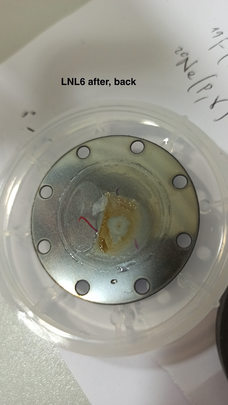
|
| Attachment 3: LNL6_after_back2.jpg
|
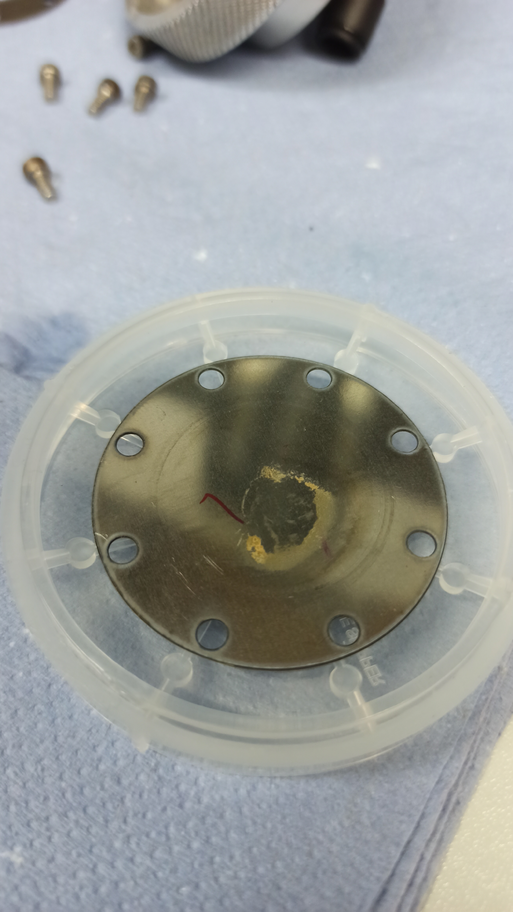
|
| Attachment 4: LNL2_before.jpg
|
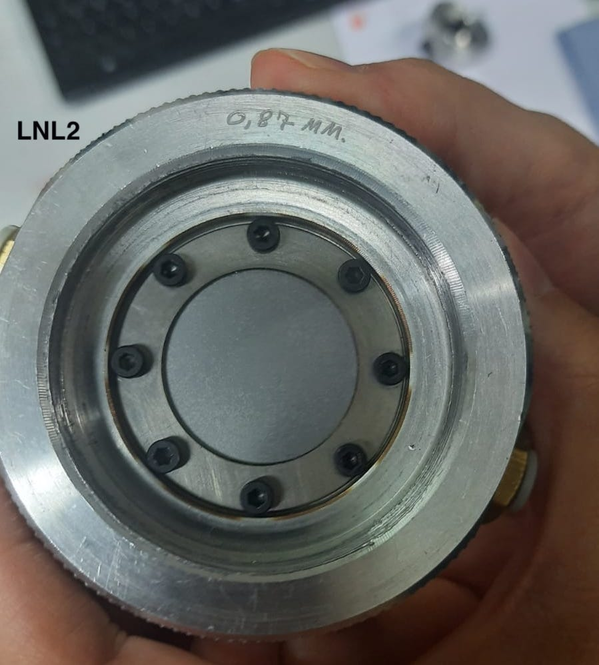
|
| Attachment 5: LNL2_after.jpg
|

|
| Attachment 6: LNL2_after_back.jpg
|
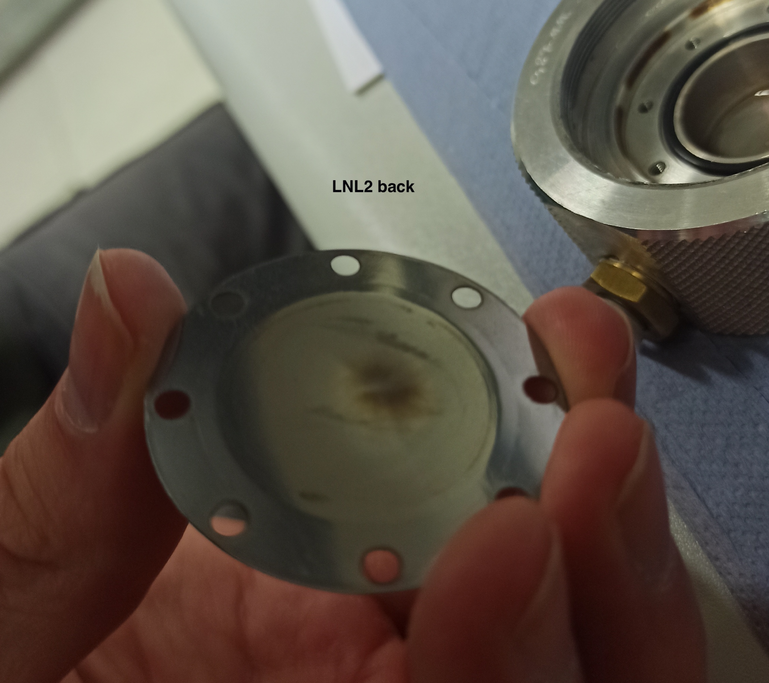
|
| Attachment 7: LNL9_before.jpg
|
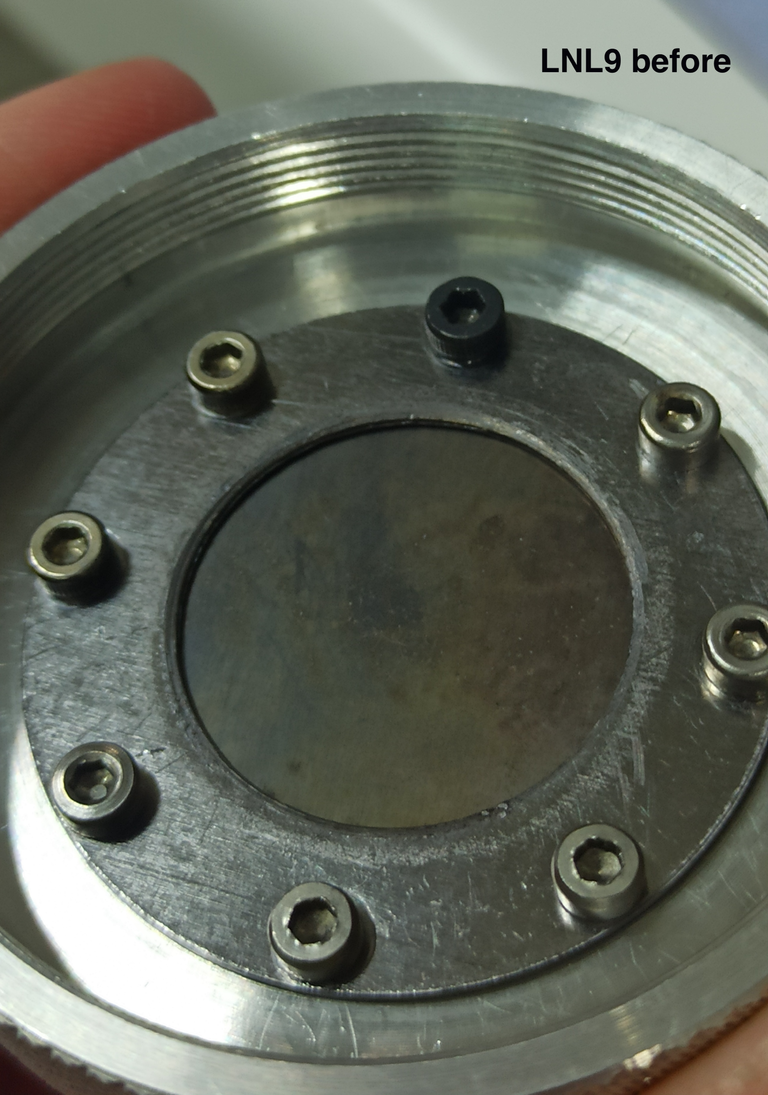
|
|
30
|
Fri Jun 16 10:42:38 2023 |
Lucia B, Federico F | Powercut during long run on LNL9 - end of shift |
On 15/06/2023 morning, around 6:32 am, a powercut caused failure in the Compresed Air Pressure system. Faraday cup was closed by the interlock and the HV was turned off.
We turned off the accelerator, dismounted LNL9 (pictures attached) and mounted Ta1 Edi backing. We left only ACP28 pump on. We also switched off GeBo HV and its cryocooler.
All details can be found in the excel sheet attached to entry 24. |
| Attachment 1: LNL9_front.jpg
|
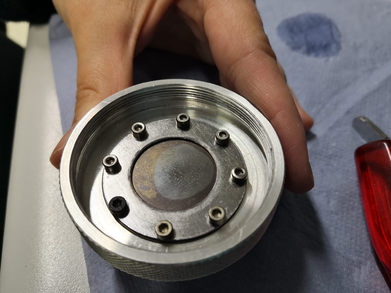
|
| Attachment 2: LNL9_back.jpg
|

|
|
22
|
Mon Jun 5 15:48:47 2023 |
Lucia B,David R | Work on DAQ for 23Na target test |
We started the acquisition via CoMPASS with one CeBr (90) and the HPGe. The germanium was already cooled at 80K with a power of 90W. The CeBr HV was already applied from NHQ 202M bias supply, channel A, HV = +650V.
We applied the HV to the germanium on 5/6/23, from Ortec 660 dual bias supply borrowed from gas target, channel B, HV = +4900V, Bias shutdown connected.
Attached a picture of the baseline in the evening, before leaving the lab.
-----------------------
The DAQ from solid target is connected to the new Intel NUC mini-PC, located below the VME crate. It is possible to connect remotely to such PC using the RDP protocol (IP address -> 172.17.5.149). To connect from lunaserver, lauch Remmina and select lap2-depalo. Here, the CoMPASS project is located in /home/Compass/projects/23Na_target_tests.
We have also created the folder on lunaserver in /home/luna/Shared/Data/23Na_target_tests, where we copied from /home/luna/Shared/Data/16O_prompt the scripts required for possible binary conversions.
We are using three channels for the acquisition:
- Ch. 1: scintillator CeBr 90
- Ch. 2 : GeBo + pulser
- Ch. 3: Pulser
Pulser module BNC Model 9010 with following parameters:
- Amplitude 50 mV
- Frequency 24 Hz
- Delay 1 us
- Width 1 us
- Rise Time 0.05 us
- Fall Time 5 us
- Polarity: positive
- No attenuation
We left an overnight background run (run_1).
|
| Attachment 1: GeBo_baseline-5-6-23.jpg
|
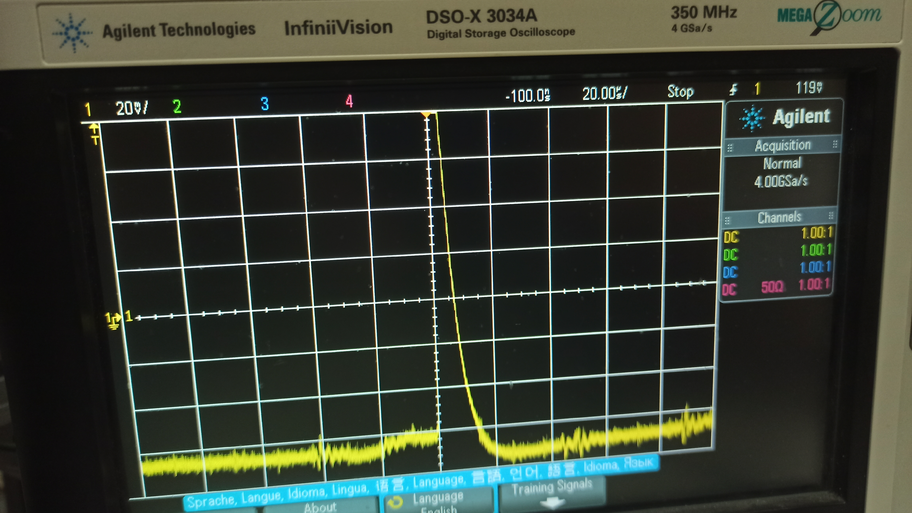
|
|
23
|
Tue Jun 6 11:15:31 2023 |
Lucia B,David R | Work on DAQ for 23Na target test |
Attached a picture of the germanium baseline in the morning 6/6/23.
-----------------------
We change the pulser amplitude to have it in the spectrum at what seemed a good position (A=150 mV).
We put 133Ba, 60Co and 137Cs sources in the shielding and started run_2 at Mon 6 June 2023, 12:15.
The run was stopped at 16:01. (Note there will be two ROOT files in the folder: one (2_1 for DataR_run_xx.root) is the automatic backup at 15:01, when the 'tentative' calibration on CeBr90 was enabled).
GeBo FWHM at 1.33 MeV is quite bad: 6.4 keV.
-------------------------------
We searched again in 16O log for optimal DAQ parameters and found them. We thave hen used them to see any possible resolution improvement. Spectrum is saved as run_3.
CeBr90 FWHM at 1.33 MeV is 46.10 keV.
GeBo FWHM at 1.33 MeV is 5.37 keV------------>with same parameters, 16O elog reports 3.42058 keV (Feb2023): note that Ge baseline thickness now is approximately 5mV, while in 16O elog I have found 2mV as reference, or slightly more from picture attached to same entry 110 Nov22).
Note that lowering the threshold at the 'optimal' values, we are cutting Ge spectrum at roughly 300 keV (which should not be a problem for 23Na+p resonance scan).
-----------------------------
We have mounted the Tantalum backing from Edinburgh (last spare, cleaned on 20/03/23 at LNGS) on the target holder and closed the beam line. We have left run_4 overnight as background run.
------------
Ge cryocooler is at 80K and 92 W.
|
| Attachment 1: GeBo_baseline-06-06-23.jpg
|
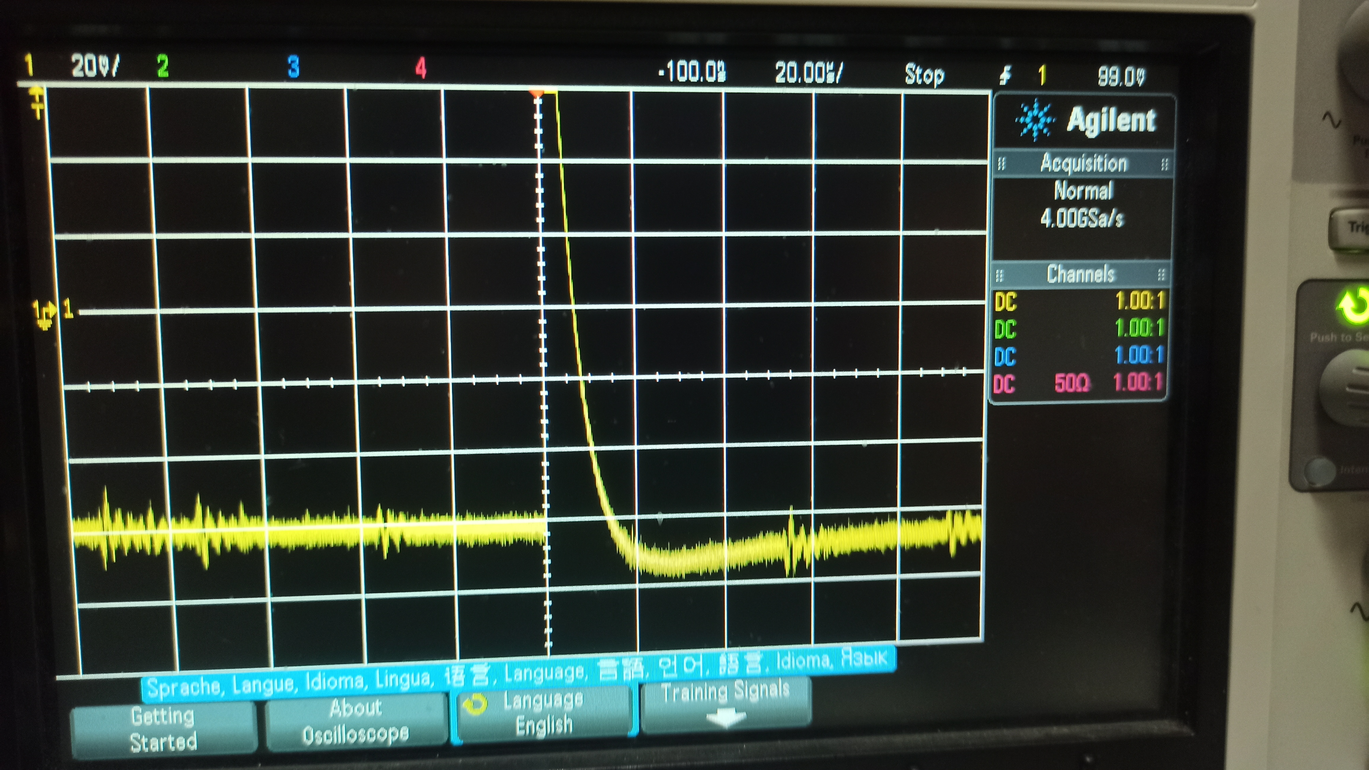
|